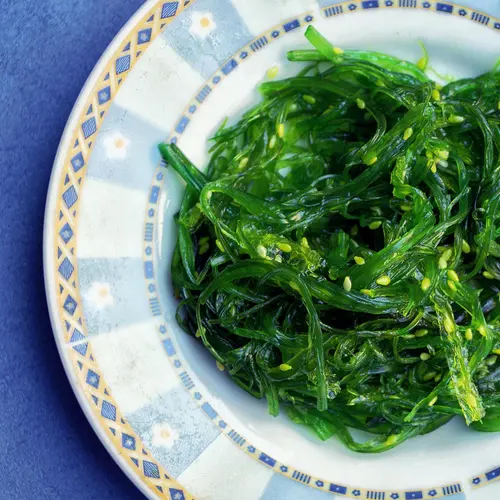Transglutaminase is a chemical that is found in nature and in artificial products. Many food products have transglutaminase as an added ingredient. It helps improve the texture and taste of meat and other foods.
What Is Transglutaminase?
Transglutaminase, sometimes called “meat glue,” is an enzyme, a chemical that speeds up chemical reactions between molecules of different substances. For example, your saliva has an enzyme called amylase that begins to break down sugars you eat.
Transglutaminase speeds up the linking of protein molecules so they stick together.
Transglutaminase can have different subtypes, depending on its source. Humans and other animals have transglutaminase in their bodies. Some types of bacteria can also make transglutaminase. Bacteria-derived transglutaminase is common in food production.
Many common foods have transglutaminase as an added ingredient because it helps the food proteins bind together. It will be listed on the label.
These foods include:
- Imitation crab meat
- Meatballs
- Baked goods
- Cheese
- Yogurt
- Hot dogs
- Beef
- Tofu
- Salad dressing
Why Do Foods Have Transglutaminase?
Transglutaminase is a common food additive. Its ability to change the characteristics of proteins is useful in food production. With transglutaminase, different meats and other foods can combine to make products that look and taste better.
Foods may have transglutaminase because it:
Improves texture. Transglutaminase changes a food’s texture and structure. It can boost the firmness and stretchiness of meats, dough, and other foods. For example, yogurt with added transglutaminase becomes thicker and firmer.
Stabilizes food mixtures. Transglutaminase can also act as an emulsifier. Emulsifiers blend ingredients that might not mix well otherwise, like oil and water.
Helps make more products. Transglutaminase can combine parts of an animal into one product. Hot dogs and sausages come from ground trimmings of chicken, beef, pork, or other meat sources. Transglutaminase helps those grounds stick together in a casing.
This also helps for steaks and other meat products. Different beef cuts from the same cow can combine with transglutaminase to create larger steaks. Multiple kinds of fish can mix together to create imitation crab meat.
Creative food combinations. Chefs and other food makers have used transglutaminase to make new products. Shrimp noodles, bacon-wrapped scallops, and other novelty products have transglutaminase to help keep their texture and structure.
Is Transglutaminase Safe?
The FDA recognizes transglutaminase as safe to eat. It has several characteristics that make it nontoxic.
Transglutaminase breaks down at a cooking temperature. Most meat is safe to eat only after it’s thoroughly cooked. By the time you eat a meat product with transglutaminase, the heat from cooking will have deactivated the enzyme. This prevents many unwanted effects of transglutaminase in your body.
The chemical doesn’t have harmful germs. Our bodies don’t store it over time to toxic levels. No public health problems have been traced back to transglutaminase.
Safety Concerns of Transglutaminase
However, transglutaminase may be linked to some health risks.
Celiac disease.Celiac disease is when you can’t digest gluten, a protein in many wheat products like bread and cereal. With celiac disease, your immune system mistakenly recognizes gluten as toxic. It releases damaging chemicals in your small intestine to destroy the gluten.
In celiac disease, the natural transglutaminase in your body takes part in those damaging chemical reactions. Research suggests that transglutaminase in food mimics what’s in your body, which may make symptoms of celiac disease worse.
Rates of celiac disease and of consumption of foods with transglutaminase have risen over the past decade. This doesn’t necessarily mean they’re linked. It might bring out symptoms in people who have celiac and don’t know it. More research is needed to understand the relationships.
Meat contamination. Transglutaminase binds meat from different parts of an animal. Some body parts are more likely to have dangerous bacteria. Mixing meats together raises the risk that one meat source will be contaminated.
It’s found in unhealthy foods. Many processed foods like meat products and baked goods have transglutaminase. These processed foods are also often high in things like fat and sugar, which can lead to obesity, plus related conditions like diabetes and heart disease.
How Do You Avoid Transglutaminase?
Some people avoid transglutaminase for health reasons. The simplest way to keep it out of your diet is to eat whole, unprocessed foods and meats. Eat lots of fruits and vegetables. Get your meat from a butcher or farm that’s open about its processes. Look for organic and grass-fed meat.
Avoid eating processed foods that probably contain transglutaminase. These include:
- Chicken nuggets
- Hot dogs
- Shrimp or other meat noodles
- Meatloaf
- Sausage
- Other meat products that say “formed” or “reformed” on the label
